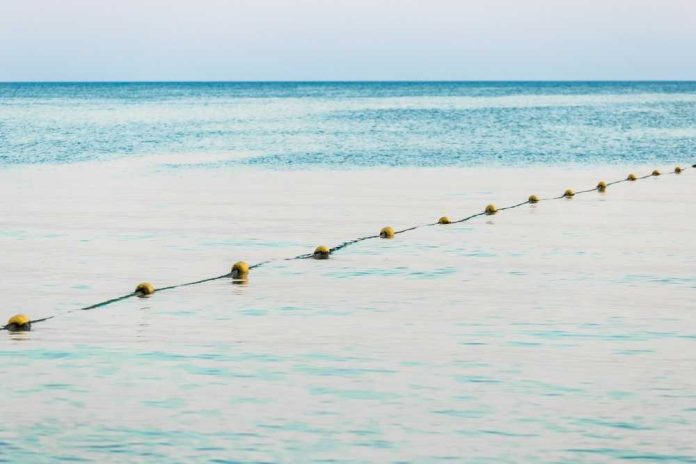
Seventeen miles of floating barriers in the Rio Grande—federal, taxpayer-funded, and pushed ahead with regulatory waivers—promise to ignite the latest round in America’s never-ending border security battle. But will this theater finally deliver real results for frustrated citizens, or just more political posturing?
At a Glance
- Department of Homeland Security plans to install a 17-mile floating border barrier in Cameron County, Texas, with expedited waivers overriding environmental rules.
- Project follows Texas’s controversial Eagle Pass buoy barrier, which triggered lawsuits and federal court rulings over state versus federal authority.
- Funding comes from CBP’s Fiscal Year 2021 appropriations, with contract awards expected by September 2025.
- Local communities, environmental groups, and border agents all brace for ripple effects, as legal, social, and economic consequences mount.
DHS Greenlights 17-Mile Floating Barrier in Rio Grande
The Department of Homeland Security has officially announced plans to construct a 17-mile floating barrier in the Rio Grande, targeting Cameron County, Texas—one of the nation’s most notorious corridors for illegal crossings and cartel smuggling. Secretary Kristi Noem signed a sweeping waiver, bulldozing aside environmental and regulatory requirements to “expedite” the project. According to DHS, this barrier is intended to close enforcement gaps, deter illegal crossings, and enhance agent safety on the river.
Cynics might say it’s a sign of progress when the federal government finally does something to secure the border, but only after months of legal wrangling, millions of dollars spent, and with a mountain of red tape shredded—ironically, by executive fiat. The funding comes straight from Customs and Border Protection’s 2021 budget, with contract awards set for late 2025. So, the taxpayers foot the bill yet again, and the only thing moving fast is the paperwork to override regulations.
Legal Showdowns and State-Federal Turf Wars
The story behind these floating barriers is a master class in American government dysfunction. In June 2023, Texas Governor Greg Abbott took the initiative, installing a similar buoy barrier in Eagle Pass as part of his Operation Lone Star. Cue the lawsuits: the Biden administration and environmental outfits pounced, arguing that Texas had overstepped its authority and violated federal law. By December 2023, the Fifth Circuit Court of Appeals had ordered Texas to dismantle the barrier, citing federal jurisdiction over navigable waters and the need for U.S. Army Corps of Engineers approval.
So what’s changed? Not much—except now it’s the federal government using waivers to sidestep the very regulatory standards it once claimed were sacrosanct. The move sets an unmistakable precedent: when states act, they’re overreaching. When the feds act, it’s “critical border security.” Abbott may have just had the wrong administration in place at the time. In the process, local communities get caught in the crossfire, with river access, recreation, and commerce all upended. Lawsuits from environmental and immigrant rights groups are already teed up, ensuring that the border crisis continues to be more about legal fees and press conferences than real solutions.
Who Pays and Who Profits from Washington’s Border Theater?
Border security professionals argue that these waterborne barriers are a “critical gap” in enforcement, especially where traditional walls are useless. But critics—environmentalists, local landowners, and human rights groups—warn of ecological damage, humanitarian risks, and a new round of drownings and river deaths. The only people guaranteed a payday are the security contractors lined up for lucrative federal contracts and the lawyers billing by the hour as the lawsuits pile up.
Meanwhile, the economic burden falls on local businesses, taxpayers, and anyone still naïve enough to believe that Washington’s latest “solution” will be more effective than the last, more expensive than the one before, and just as mired in bureaucratic nonsense. The social fabric stretches thinner as communities divide over whether these barriers are necessary protection or political showmanship. One thing is certain: the federal government’s sudden willingness to bypass its own rules shows that, when it comes to border security, we might finally have the right team in place.
Sources:
What’s in the 2025 Reconciliation Bill So Far?
CBP’s Primary Mission Areas in 2025







